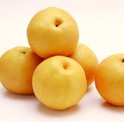Growing pear varieties from seeds is a topic that piques the interest of many gardening enthusiasts and even commercial growers. As a pear varieties supplier, I've encountered numerous inquiries about this method of propagation. In this blog, I'll delve into the science behind growing pear trees from seeds, the challenges involved, and whether it's a viable option for obtaining specific pear varieties.
The Science of Seed Germination
To understand whether you can grow pear varieties from seeds, it's essential to first grasp the basics of seed germination. Pear seeds, like those of many other plants, contain an embryo that has the potential to develop into a new plant. However, the process is not as straightforward as simply planting the seed and waiting for it to sprout.
Pear seeds have a dormancy period, which is a natural mechanism that prevents them from germinating until the conditions are favorable. This dormancy is often broken through a process called stratification, which mimics the cold, moist conditions of winter. To stratify pear seeds, you can place them in a moist medium, such as peat moss or vermiculite, and store them in the refrigerator at a temperature of around 33 - 41°F (0 - 5°C) for 60 - 90 days.
After the stratification period, the seeds can be planted in a well - drained potting mix. Keep the soil moist but not waterlogged, and place the pots in a warm, sunny location. With proper care, the seeds may germinate within a few weeks.


Genetic Variation in Seed - Grown Pears
One of the main challenges of growing pear varieties from seeds is the issue of genetic variation. Pears, like many fruit trees, are cross - pollinated, which means that the pollen from one pear tree fertilizes the flowers of another. As a result, the seeds produced by a pear tree are a genetic combination of the two parent trees.
When you plant a pear seed, the resulting tree will not necessarily be identical to the parent tree. In fact, it may have characteristics that are quite different from the parent, including fruit quality, size, flavor, and disease resistance. This is because the genetic material from the two parent trees recombines randomly during the formation of the seed.
For example, if you plant a seed from a Lovely Sweet Pear, the tree that grows from that seed may not produce fruit that is as sweet or as large as the original. It could also be more susceptible to diseases or pests.
Rootstock and Grafting
In commercial pear production, most pear trees are propagated through grafting rather than growing from seeds. Grafting involves joining a scion (a piece of a desired pear variety) to a rootstock (a young, vigorous root system). The rootstock provides the foundation for the tree, while the scion determines the fruit variety.
There are several advantages to using grafting. Firstly, it allows growers to ensure that the resulting tree will produce fruit of a specific variety with known characteristics. Secondly, the rootstock can be selected for its disease resistance, tolerance to soil conditions, and other desirable traits. For example, some rootstocks are more resistant to fire blight, a common and destructive disease of pear trees.
Growing Pear Varieties from Seeds: Is it Worth It?
So, can you grow pear varieties from seeds? Technically, yes, you can grow a pear tree from a seed. However, if your goal is to obtain a specific pear variety with consistent fruit quality, growing from seeds is not the best option.
On the other hand, if you're interested in the process of growing plants from seeds and don't mind the uncertainty of the resulting tree, growing pear seeds can be a fun and rewarding experiment. It can also be a great way to learn about plant propagation and genetics.
If you do decide to grow pear seeds, here are some tips to increase your chances of success:
- Collect fresh seeds: Use seeds from ripe, healthy pears. The fresher the seeds, the higher the chances of germination.
- Proper stratification: Follow the stratification process carefully to break the seed dormancy.
- Provide optimal growing conditions: Once the seeds germinate, make sure they have plenty of sunlight, water, and nutrients.
Conclusion
In conclusion, while it is possible to grow pear trees from seeds, it is not a reliable method for obtaining specific pear varieties. As a pear varieties supplier, I recommend using grafting for commercial production or when you want to ensure the quality and characteristics of the fruit.
However, if you're a home gardener or a hobbyist, growing pear seeds can be a fascinating project. It allows you to observe the wonders of nature and the process of plant growth.
If you're interested in purchasing specific pear varieties for your orchard or garden, I invite you to contact us for a detailed discussion. We have a wide range of high - quality pear varieties available, and our team of experts can provide you with the best advice on planting, care, and cultivation.
References
- Hartmann, H. T., Kester, D. E., Davies, F. T., & Geneve, R. L. (2011). Plant Propagation: Principles and Practices. Pearson Prentice Hall.
- Westwood, M. N. (1993). Temperate - Zone Pomology: Physiology and Culture. Timber Press.





